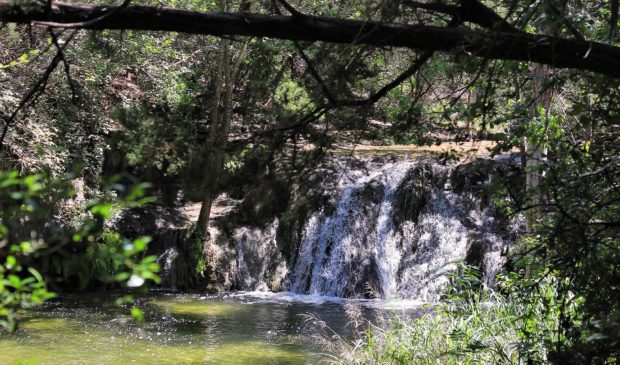Watershed Protection budget accounts for approval of CodeNEXT
Tuesday, June 12, 2018 by
Jessi Devenyns This year, as the Watershed Protection Department goes through its annual budgeting cycle, things are looking good.
At the June 6 meeting of the Environmental Commission, Watershed Protection staff presented an overview of its upcoming projects and the related finances. According to Mike Personett, the interim director of the department, “We’ve got fairly good news with respect to funding.”
Although the department has an estimated $1.94 billion in total unfunded capital improvement project needs, according to Personett, many of the current Watershed Protection projects can be funded by the base rate increase that the department is seeking had previously implemented. The department’s funding is largely based on the drainage charge on utility bills, which is calculated based on impervious cover, and in Austin, there is quite a bit of that going down.
Nevertheless, to continue growing its number of projects, the department is asking for $37 million to be moved from operating expenses to fund its 53 capital improvement projects for its 53 capital improvement projects, 10 of which will be brand new in Fiscal Year 2018-19. “The bulk of our money we’re putting into creek and localized flood mitigation,” said Watershed Protection Planning Division Manager Matt Hollon. Fifty-one percent of the capital improvement budget, or $18.8 million, is allocated to 20 creek and localized flood risk reduction projects.
According to Personett, the capital improvement project budget is the largest it has been and there is no expectation that it will decrease. In fact, there is a capital investment projection of $35 million for each year for the next five years.
Many of these projects are already taking into account the anticipated Atlas 14 that the National Weather Service is expected to release in the fall, which shows Central Texas’ 100-year flood plains becoming 500-year flood plains 500-year flood plains becoming 100-year flood plains. Personett explained that although the study is not finalized, the department is confident in its release and so are preparing for the new maps. “Prevention is always better than having to come back later and deal with the problem,” he said.
Surprisingly, Personett does not expect CodeNEXT, the rewrite of the Land Development Code that is currently being discussed by City Council, to greatly affect the department. “In terms of CodeNEXT there are not a lot of direct impacts,” he said. However, he explained that “if CodeNEXT does pass we’re going to see a lot more of flood mitigation and projects.” In preparation, the department is asking for 28 new full-time employees. Personett explained that these employees will also help combat the steady retirement attritions that the department is experiencing.
Although project funding is looking steady, Peggy MacCallum, the chief financial officer for Watershed Protection, said that the department will have to dip into its fund balance for $6.1 million because it is expecting more expenses than revenue. However, she assured the commission that this would soon balance out in their favor because of the “steady but smooth increase in that revenue we’re projecting for the next five years.”
According to Mike Cannatti of the Barton Springs Conservancy, there might be a quicker way to close the gap between expenses and revenue. According to him, the Council-appointed Bond Election Advisory Task Force found some spare change. “Staff said we have $35 million that can be funded by other (avenues).” He suggested that the Environmental Commission make a recommendation to allocate the funds to Watershed Protection.
This extra money would help augment the bond task force recommendation that the Watershed Protection Department receive $72 million for open space acquisition and allow the department to get closer to the $150 million price tag that Watershed Protection staff recommended for Watershed Protection funding in that area.
“(Cannatti) mentioned that there are excess funds from the city, which I can hardly believe,” said Commissioner Pam Thompson. She explained that if that were truly the case, she has a wish list of projects that would go faster.
However, while they wait on the elusive pot of gold, the project list that exists and the proposed budget to fund it were unanimously recommended by the commission.
This story has been corrected to show that the base rate increase has already been implemented and the department is asking for $37 million to be reallocated and to clarify a statement regarding the 500- and 100-year flood plains. Photo by Larry D. Moore [CC BY-SA 4.0], via Wikimedia Commons.
The Austin Monitor’s work is made possible by donations from the community. Though our reporting covers donors from time to time, we are careful to keep business and editorial efforts separate while maintaining transparency. A complete list of donors is available here, and our code of ethics is explained here.
You're a community leader
And we’re honored you look to us for serious, in-depth news. You know a strong community needs local and dedicated watchdog reporting. We’re here for you and that won’t change. Now will you take the powerful next step and support our nonprofit news organization?








